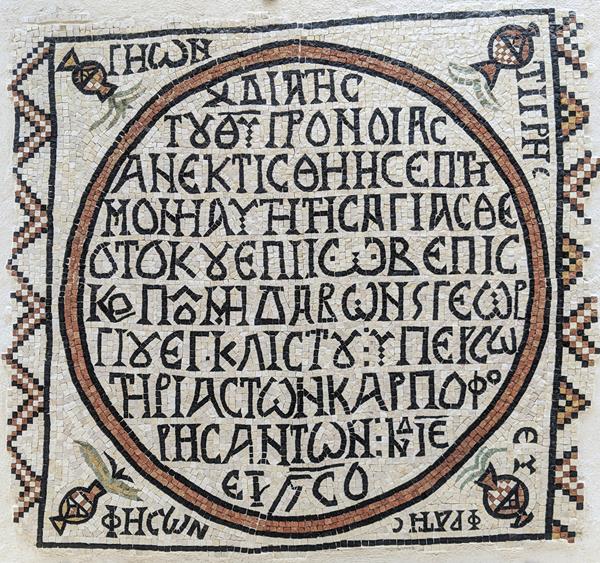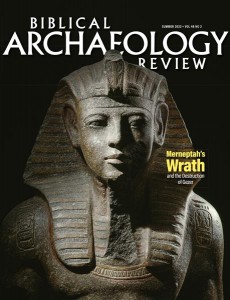Monastic Nomenclature
Sidebar to: Moses and the Monks of Nebo

The inscriptions in the mosaic pavements of the Mt. Nebo monasteries offer insight into how these monastic communities were organized. An inscription from the Monastery of the Theotokos at ‘Ayn al-Kanisah refers to “Abraham, the abbot and archimandrite of the whole desert.” The term archimandrite designates the abbot of the chief monastery who was responsible for all the monks in the region. Thus, in the late sixth century, Abraham was the abbot of the Monastery at Mt. Nebo and archimandrite for all the monasteries of the region.
Each monastery would have been led by an hēgoumenos (abbot). The term abba (father) is also used on occasion in reference to the leader of a monastic community, such as an abbot. It could, however, also refer respectfully to an elderly member of a monastic community. This title is likely a Greek version of the Semitic title abouna.
At Mt. Nebo, most of the abbots also have the title presbyteros (priest), suggesting that these individuals had been ordained before entering the monastery. It was rare for a monk to be appointed to the priesthood after joining the community. Each monastery usually had one priest—in some instances also the abbot—who was assisted by diakonoi (deacons).
Already a library member? Log in here.
Institution user? Log in with your IP address.

